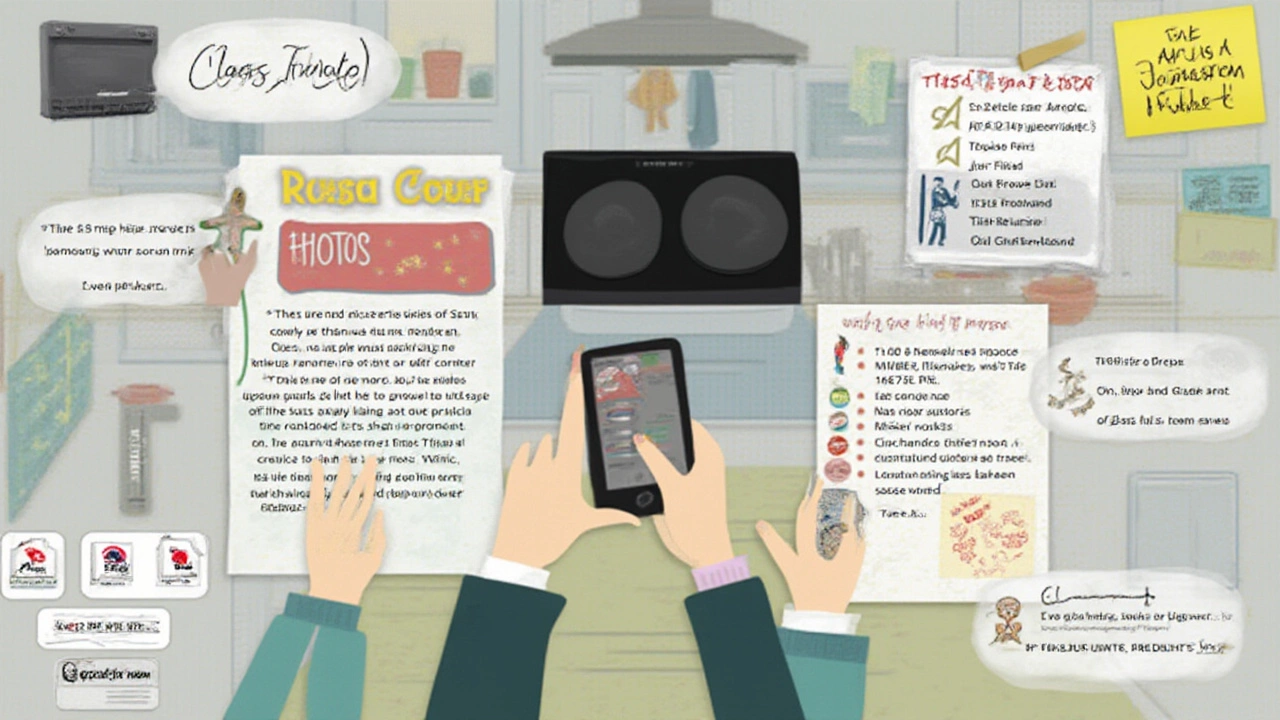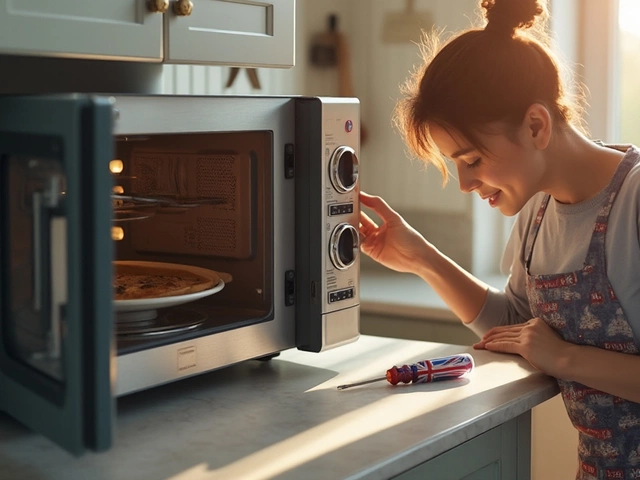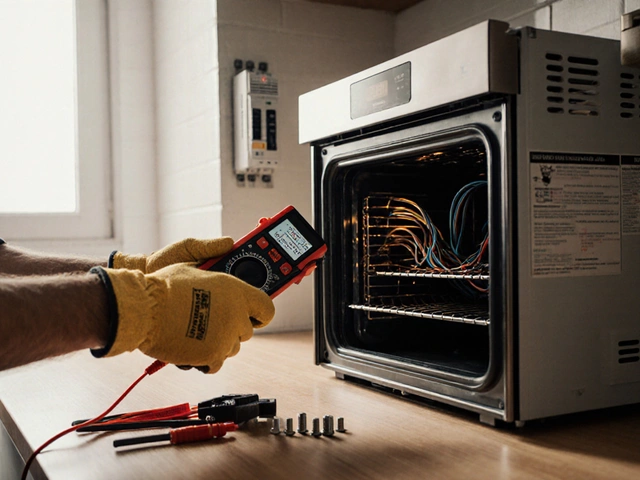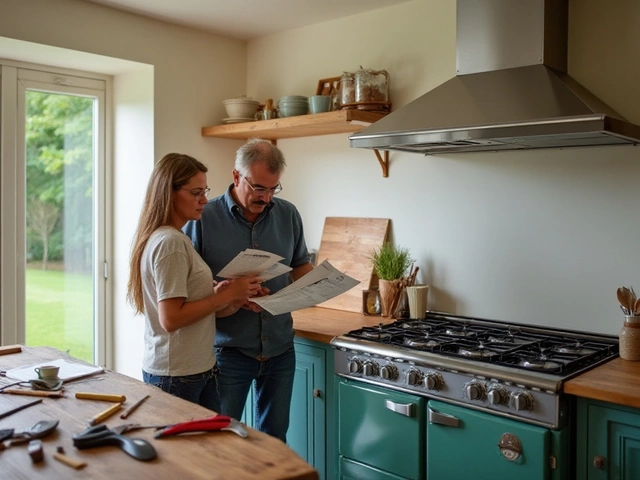Ever hear the sound of your glass hob cracking and freeze? That split-second of silence as you wait for the damage to set in, only to find a web of lines snaking across the surface? It happens more often than you’d think. Glass hobs look sleek and modern, but they’re not immune to accidents—whether it’s a dropped pan, a sudden temperature change, or just bad luck. But here’s the kicker: the price tag to fix it might catch you off guard more than the crack did. The idea of replacing or repairing something that looked so sturdy can make anyone wince, especially when you start adding up costs. Let’s pull back the curtain on glass hob repair costs, piece by piece.
Common Problems with Glass Hobs
The classic glass hob isn’t just a pretty face. Underneath that shiny surface is a world of tech and smarts that keep your cooking under control. But even the most careful owner can run into issues—and they usually fall into a few categories. Cracks are the big one, of course. Sometimes it’s a single hairline fracture—other times the glass spiders out in every direction. A study by Which? in 2024 showed that around 12% of requests for hob repairs in the UK were due to surface cracking, with most caused by impacts (think: a heavy skillet slamming down too hard).
Heat stress is another culprit. Some folks crank the temperature up, don’t let the hob cool down, and then spill cold water over it. The glass doesn’t like those quick changes. Over time, this can create chips or even full-on shattering. Then there’s scratching—metal pots scraping against the glass or someone using the wrong cleaner (trust me, don’t use those grainy powders). Scratches aren’t just ugly; if they’re deep, they can weaken the glass and lead to more serious cracks.
Sometimes, the problem isn’t even the glass. You might get faulty touch controls, broken sensors, or a burner that won’t light up. These aren’t a ‘glass only’ problem, but they often mean that to replace a part beneath the glass, you have to remove the top entirely. And once it’s out, the question comes up: Should you just replace the glass at the same time? This is when a quick repair can become a multi-part, more expensive job. Some brands complicate the issue—Bosch, Neff, and Smeg are known for having pricier glass panels, and their specific designs can inflate the bill.
And you can’t ignore user mistakes. Spilled sugar and sauces left on a hot surface, or dropping a bottle of olive oil—these are more common than you’d think. I once saw my spouse, Elara, try to clean a still-warm hob with a cold wet sponge, and the result was a sharp crack that still makes us groan when we remember the invoice. It’s not just about being clumsy or careless—life happens, kitchens get busy, and glass hobs pay the price.
Other odd issues crop up too. Sometimes, a hob seems to go ‘pop’ after years of use, even with no clear accident. That can be down to manufacturing defects (though rare), worn seals, or even tiny grit trapped under a pan base. The point is, glass hobs have more ways to break than most people expect. And those breakages, big or small, all have their own repair price tags.
What Drives the Cost of Glass Hob Repairs?
Okay, so you’ve got a crack, a chip, or a full-on shatter. What’s next? The cost isn’t just pulled from thin air. Several things come together: the brand, the hob’s size, the exact type of glass, and, of course, where you live. Location actually matters a lot—repair pros in London, for example, usually charge a bit more than someone in rural Cornwall. Then there’s whether you have a ceramic or induction hob. Induction models often run higher since the glass is engineered to work with high-tech coils underneath. For a basic 60cm ceramic glass hob, the average replacement glass starts at about £100, but it can easily double or triple for high-end brands. Installation adds another £80–£120 if you call in a pro. The table below compares some average costs across popular brands in 2025.
| Brand | Glass Panel Only (£) | Labour/Installation (£) | Total Avg. Cost (£) |
|---|---|---|---|
| Beko | 110 | 90 | 200 |
| Bosch | 230 | 110 | 340 |
| Neff | 250 | 120 | 370 |
| Hotpoint | 150 | 85 | 235 |
| Siemens | 240 | 120 | 360 |
| AEG | 200 | 100 | 300 |
But wait—sometimes the glass isn’t the only thing that breaks. If the heating elements or sensors underneath get damaged, the bill goes higher. If it’s an integrated hob and oven, removing the unit can tack on extra charges. Warranty? That can be a lifesaver, but it only works for defects and not accidents like drops or impacts (unless you sprang for extended cover).
There’s also the debate of repair vs. replace. If your hob is older than seven years, a lot of technicians push for complete replacement. Why? Newer models can be more energy efficient, and the repair could end up costing half the price of a fancy new cooktop. Of course, if you’re attached to your hob’s specific style or controls, a repair might still make sense—just know it isn’t always the best bang for your buck.
The final wild card is availability. Since Brexit, some parts for European models are harder to get, so a specialist may have to order glass from abroad. That adds both time and a ‘sourcing fee’ that can nudge costs north again. Supply chain delays don’t care if your Sunday roast plans are hanging in the balance.

Glass Hob Replacement or Repair: Which One Suits Your Situation?
Not every crack spells doom, but deciding between patching things up and swapping your hob out can feel like a gamble. Small chips—less than a penny wide and not near the heating zones—can sometimes be smoothed over with resin kits or left alone. But don’t rely on super glue, no matter what quick-fix YouTube shows; that’s a short-term patch at best. Once a crack breaches the edge or crosses into the cooking area, it’s usually game over: the structural strength of the glass is compromised, and there’s real risk of shattering.
A glass hob under warranty might get you a free repair if the problem’s down to faulty materials, but accidental damage almost never makes the cut. Damage from a dropped pan? Expect to pay. Insurance can be helpful here—double-check your home insurance policy. Some cover accidental damage in kitchens, and believe me, that’s saved more than a few dinners when things have gone sideways in my house.
Professional repairers tend to lean toward full glass replacement if the fault’s in a spot where the glass takes heat regularly. If the controls are buggy but the glass is whole, then an electronics repair could be all you need—which is cheaper. A cracked ceramic or induction surface, though? That’s a ticket for full or partial glass replacement in almost every case.
DIY fixes are out there, but unless you love risk, I’d steer clear. Manufacturers don’t sell bare glass to the public, and juggling tempered panels sharp enough to slice a steak is a real hazard. If you still fancy having a go, research your exact hob model and order through a certified stockist. Getting it wrong costs more in the long run, and you could easily damage internal wires or sensors, multiplying your bill. At home, a friend swapped out a cracked panel and ended up shorting out the whole hob—his two-hour ‘DIY repair’ turned into a three-week wait and a bill that could’ve bought a weekend break in Spain.
One thing worth looking for: local repair shops specialising in your hob’s brand. Some London independents have panels in stock for popular models, and same-day swaps are more common than you’d think—sometimes a real dinner-saver. But rare hobs or odd-shaped models might need glass cut to order, which takes longer (and costs more).
Is Repair Worth It? When to Replace Instead
Glass hobs aren’t exactly budget appliances, so ditching yours for a new one is never the first instinct. But there’s a tipping point when repair costs start looking ridiculous compared to just getting a new cooktop. Most experts put that line around 50–60% of the cost of a replacement. If your repair total creeps past that, grab your measuring tape and start browsing new models.
New hobs aren’t just about a shiny surface. Efficiency has jumped up lately—modern induction hobs use less power and heat pans faster than models from even five years ago. Plus, repairs have their limits. If the electronics are old or obsolete, or if parts take weeks to source, spending a bit more for a new warranty and peace of mind is hard to argue against. Warranty usually kicks in for two years on brand new hobs (some brands offer five), and covers both glass and electronics—at least for manufacturing flaws.
The decision isn’t only about money. If you’ve got a custom-sized cut-out in your worktop, swapping to a new model might mean adjusting countertops—a bigger job. On the flip side, if you’re aiming for an upgrade, it could be the perfect excuse to overhaul your kitchen layout. A cracked hob can be an annoyance, but it’s also a doorway to planning for what actually suits your family’s cooking habits.
One thing that doesn’t change: don’t ignore cracks, however tiny. A 2023 report by the UK Consumer Safety Office flagged 18 home injuries traced to ‘domino-style’ hob failures—where a small crack suddenly spreads, shatters the whole surface, and scatters glass shards. The advice is clear: treat even small defects seriously.
Buying a replacement panel? Double-check your model number down to the last digit. Manufacturers change specs even within the same product range, so “close enough” won’t fit. Sites like eSpares and Currys Parts usually list compatible models, but sometimes you’ll need help from the manufacturer’s customer service to get it right.

Tips for Lowering Your Glass Hob Repair Bill
Nobody likes unexpected expenses, especially in the kitchen. Still, there are a few easy ways to keep your repair bill from spiralling.
- Compare quotes: Don’t accept the first price from the service centre. Use online platforms or even Facebook local groups to find trusted repair pros with lower call-out fees.
- Look for independent repair shops: Chain stores have their perks, but smaller independents often have parts in stock and offer quicker turnarounds for standard hobs.
- Check for warranty or insurance: Dig up your paperwork—you might be covered and not know it. And if your home insurance offers kitchen cover, it can save you even if the hob’s old.
- Maintenance matters: Take care of your glass—wipe up spills while warm (not hot), use the right cleaners, and avoid dragging pans across the surface. Small investments in cleaning kits save big money down the road.
- Preventive fix: If you see a chip, cover it with heat-resistant tape and stop using that zone until a pro can check it out. Leaving it unchecked increases the chances it’ll spread and cost you more.
I get it—sometimes you just want to get dinner back on track, not perform surgery on your hob. But with a little attention, plus the right know-how about what impacts the bill, you might just keep those costs more manageable than you’d expected. And next time you’re lifting a cast iron pan, remember that the surface under it is way tougher than it looks, but not invincible.
So, the bottom line? Expect glass hob repair costs to range from £150 to £400 depending on the brand, parts, and your own luck. The most important glass hob repair cost factors are pretty clear-cut: accident type, model, and who does the repair. Keep those in mind, and your kitchen won’t catch you off guard the next time glass cracks under pressure.







